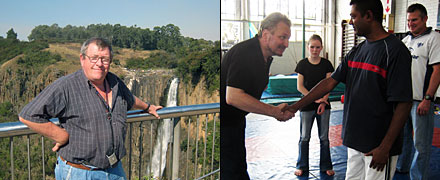...the highest incidence of baby and child rape in the world; South Africa is actually referred to as the “rape capital of the world,” – with reason!
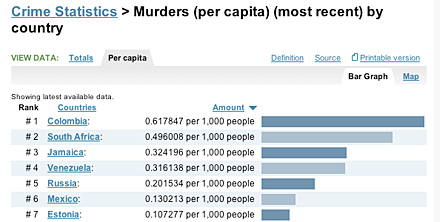
Blue Light Bullies
One of the most insidious problems in the country are the “Blue Light Bullies.” This refers to rogue police and personal security convoys who escort government officials around the country. To get their way, they often shove civilian cars off the highway; either with their own vehicles or (in at least one well documented incident) shooting out the tires; just so that they can speed their convoys along.

Crime in Johannesburg
My first point of contact in South Africa was Johannesburg airport, I could clearly see the scams unfolding – unofficial baggage handlers happily misdirecting the luggage of unsuspecting travelers. I also heard numerous reports about tourists leaving the airport and being followed and robbed at gunpoint! Passport theft is particularly rampant and all tourists are warned not to do any touring whatsoever at night.
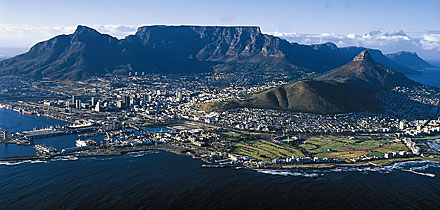
South Africa is a beautiful country and everyone I personally met there was warm and generous – it's unfortunate that the people have to endure this level of corruption and random violence in their daily lives. The purpose of this trip was to introduce the concepts and practices of the Realfighting defensive-tactics program.
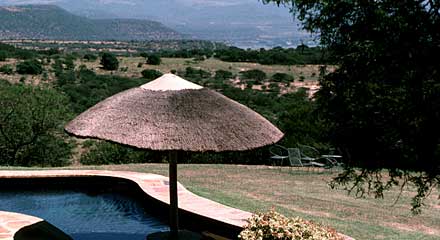
I was introduced to several cities in South Africa; Durban, Pietermaritzburg (both in Kwa-Zulu Natal province) and Johannesburg (Gauteng province); and had the opportunity to coach (I) One of the largest karate organizations in South Africa (Kimura Shukokai), (II) Instructors of the KwaZulu Natal Road Traffic Inspectorate (Provincial Highway Patrol), and (III) Instructors of KwaZulu Natal Wildlife, the organization responsible for protecting wildlife from poachers).
Dealing with Violence in South Africa
Meeting with members of the Kimura Shukokai Karate organization gave me unique insights as to the day-to-day violence in South Africa. Nearly everyone had a tragic crime story, and if it wasn’t a personal tale it was from a family member.
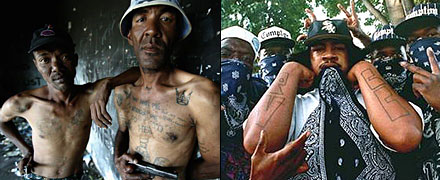
Typical Tourist Violence in South Africa
The typical violence in South Africa [on tourists] are basically robberies, and they can become extreme. Around the time I was there, a tourist family (father, mother and two kids) were thrown off a train after they were robbed. A woman tourist, while sightseeing in a rented car, drove into the wrong neighborhood and was killed – there are many more stories like this! The lesson here is that this is NOT the country to go exploring on your own!

South African Street Weapons
One of the most ubiquitous weapons used in South African street violence is the Okapi knife, a pocketsize lockblade folder. Other weapons include various machetes and knobsticks (clubs with wooden or metal knobs at the end). Ambushes involving 3-4 men with assorted firearms are also quite common. Typically, firearms include AKs, FALs, G3s, Galils, and assorted stolen handguns and hunting rifles.

Avoiding Crime in South Africa
So what’s a tourist to do? There are ways to ensure your safety: #1) Always travel and stay with large groups if possible #2) Try to travel with a local, #3) Never walk around the streets by yourself or take an unregistered taxi, #4) keep your valuables in a safe place, don’t walk around and flash them or your cash, #5) if robbed, give it up fast and run the other way #6) don’t trust the hotel staff, they often case out victims, and #7) stay aware at all times, watch your surroundings, listen to your intuition, if you feel unsafe -- you are, get back to familiar surroundings.
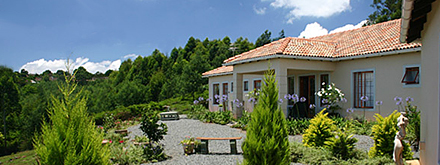
Home and Hotel invasions in South Africa
Although home invasions are quite numerous be forewarned about hotel invasions. From B&Bs to large hotels, always double and triple check your doors and windows, make sure they are locked even when you are inside.
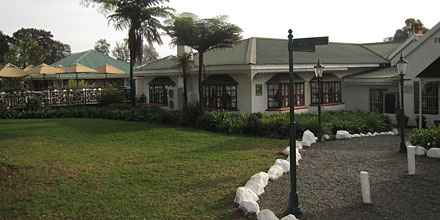
I heard many first-hand stories about home invasions; including a story from the Bed & Breakfast I stayed at. It seems that many of the local maids, staff and caretakers inform their criminal friends about the comings and goings of the households they work for -- even giving them the keys. Gangs of criminals invade restaurants, hotels and private homes: robbing and at times torturing, raping and killing the inhabitants. The government further helps the criminals by making it a crime for civilians to have attack trained dogs and electrified fences.
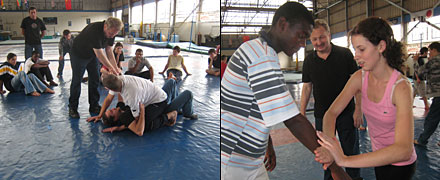
Part I: South African Karate Students Add New Skills
Teaching Kimura Shukokai in Pietermartizburg and Johannesburg. I was asked to present the concepts and techniques of reality-defense to the Kimura Shukokai group in South Africa. Shukokai, a branch of Shitoryu, is a traditional karate style created by Chojiro Tani just after WWII and then developed technically by the innovations of Shigeru Kimura and more recently by South African, Lionel Marinus. The organization has a huge international presence, one of the largest single karate groups in the world. There are branches in Africa, Asia, Europe, North America, Australia and New Zealand.
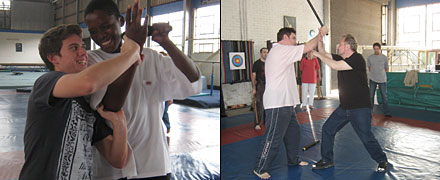
Meeting with the Kimura Shukokai Karate organization gave me unique insights as to the day-to-day violence in South Africa. Everyone had a tragic crime story, and if it wasn’t a personal tale it was from a family member. I taught two groups, #1) the Pietermartizburg group for 2-days and the #2) Johannesburg group for 2-days. I was pleasantly surprised how warm, welcoming and open-minded everyone was to me personally and to the general instruction. Some attendees came from as far away as Namibia, Botswana and Zimbabwe.
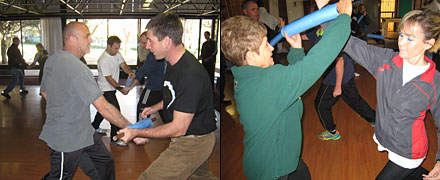
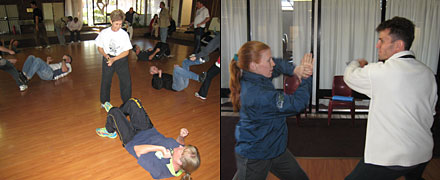
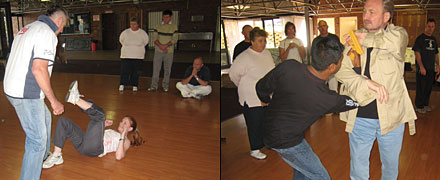
Although many of the karate students were skilled in basic self-defense and sparring, they were less familiar when dealing with knives, guns and ground escapes – and that’s what we focused on. We also covered counters from common situational attacks (passive/aggressive), restraining tactics and choke applications and defenses. The karate students were surprisingly open-minded and quickly integrated these new concepts into their repertoire.
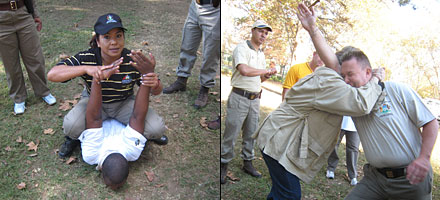
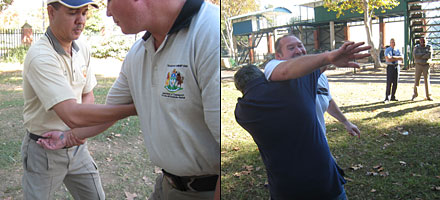
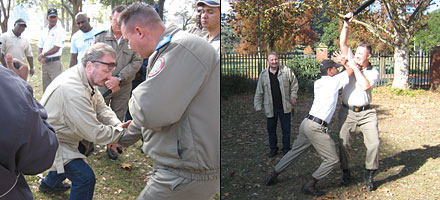
Part II: Training the KwaZulu Natal Road Traffic Inspectorate (Provincial Highway Patrol)
I never imagined how enthusiastic the instructors from this department were about their training and I never realized how dangerous their jobs were. As I was told by several officers, they often stop speeding vehicles carrying multiple passengers often armed with automatic weapons. They also protect the public from robberies and armed attacks. Many restaurants outside of the big malls close early throughout South Africa since they are often targets of armed gangs, sometimes they just rob the restaurant at other times they shoot up the place with or without diners. The police deal with these gang assaults.
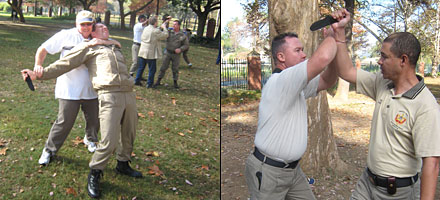
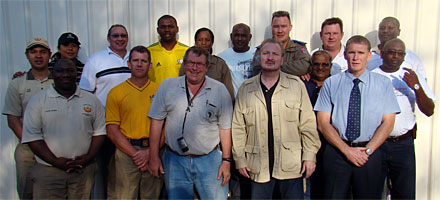
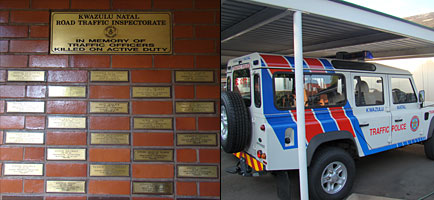
The primary training concerns were edged weapons defense, restraining an aggressor and handgun disarms. Much of the edged weapons attacks we taught were a combination of Floro and the Realfighting Program. The unarmed and restraint concepts that were taught are derived from a street modified form of MMA utilizing concepts and techniques from wrestling, BJJ, judo, muaythai and combatives.
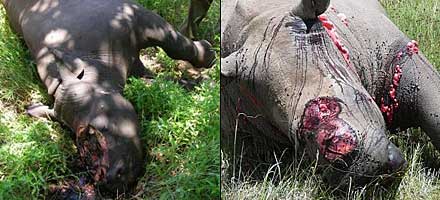
Part III: Training Wildlife Conservation Officers in South Africa
Problems in the African Bush Today:
I’ve been told that there are 3,500 black rhinos left in the world, and 3,000 of them are in South Africa -- but they are being killed fast. The only line of defense are South Africa’s Field Rangers. These overworked, underpaid and under-resourced heroes of the bush do their best to curb the animal slaughter.
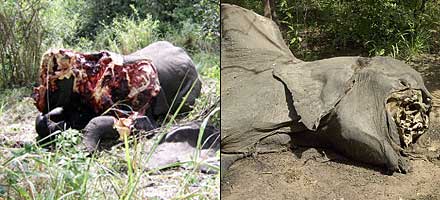
Until recently they only dealt with local tribesmen and so-called subsistence poaching, however a new breed of professionals, i.e. crime syndicates funded by Asian cartels are moving in. These well-organized groups use helicopters and high-tech gear to swoop in, shoot the rhinos and elephants and use chain saws to remove the horns/tusks before anyone knows they were there. Since the beginning of 2010 around 90 rhinos (both black & white) have fallen to organized crime.
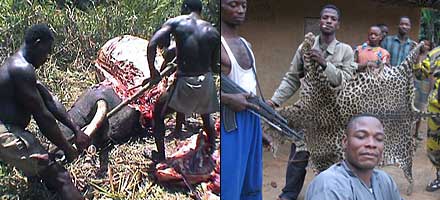
There’s not much the rangers can do against these professionals at this time. The government is currently considering forming an official SWAT team to deal with them. However, the immediate problem they always deal with are the local tribes. They hunt for food, but also for horns and tusks, and they have no hesitation about killing rangers, after all, rhino horns sell for over $60,000 USD per kilo – that’s 30% more than the price of gold.
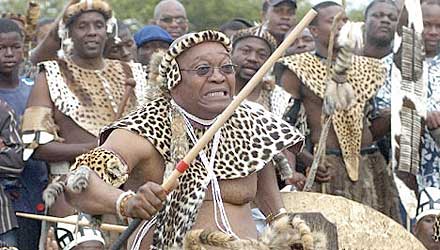
Animal Poaching Problem in the African Bush:
Zulus (and other local tribesmen) and whites not only poach rhinos and elephants but also other endangered or protected species. The leopard skin is traditionally reserved to be worn by Zulu royalty. Unfortunately for the leopard, this regalia has become popular with the Zulu nouveau riche or any "warrior" who fancies himself as a celebrity, making the leopard a prime target for poachers.

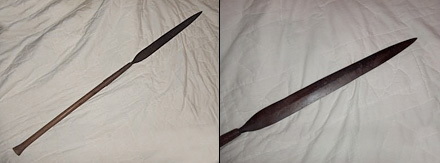
Rangers are allowed to use their firearms when they are attacked, however the biggest danger are the ambushes that occur in low light and in tight quarters, using firearms and traditional Zulu/African weapons such as the: Iklwa (stabbing spear), the Iwisa (knob-stick war club) and the Celemba (the traditional African/Zulu machete). Once surrounded in an ambush, firearms are not so easy to deploy at a moments notice and at such a close range, especially long guns. For these encounters it’s better to use a short staff or club to counter these deadly weapons.
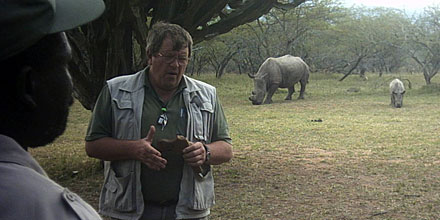
The World Wildlife Fund Black Rhino Range Expansion Program
One of the most prolific trainers for the World Wildlife Fund’s Black Rhino Range Expansion Program, is Don Gold. Whenever the WWF reintroduces the Black Rhino into a habitat, he is the expert they call to train the Field Rangers in compliance and control (against poachers). That is, general police tactics such as: verbal judo, restraint tactics and arrests. He also teaches shooting tactics for those times when less aggressive measures are not enough. To date Don has trained more than 90% of all the Field Rangers in the KwaZulu Natal province.
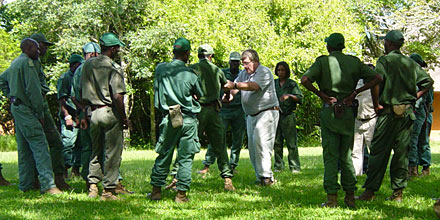
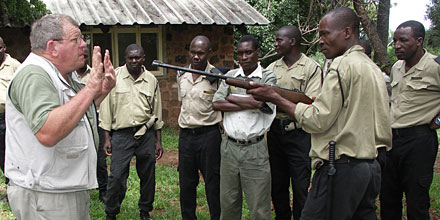
Don’s open mindedness for new and innovative defensive tactics is what brought me to South Africa. In addition he trains paramilitary, police and security organizations throughout South Africa and neighboring countries.
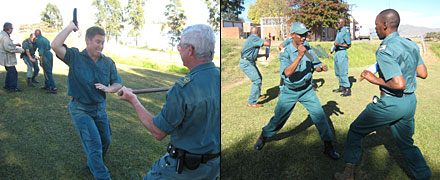
African Poachers Attacking Conservation Officers
Poachers often ambush field rangers using a variety of firearms, but the most vicious attacks are ambushes with spears, machetes and knives. I was invited to: 1) introduce a method of coping with spear and machete assaults, 2) teach an effective knife-counter-knife program, and 3) examine different methods to restrain and arrest the poachers.
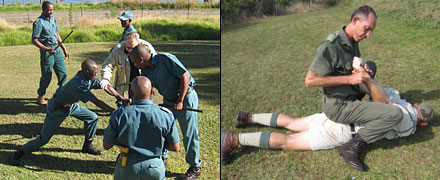
The spear attacks in particular are extremely dangerous and difficult to cope with. They use them with short jabs and are very difficult to block. The South African machetes are also a big problem. These machetes are not the small South American versions many of us are familiar with. These are much longer and are used to cut cane in the field. The most effective defense against these unpredictable weapons is the Floro method. This consists of a series of easily learned and instinctive movements that cover all directions and angles of an attack. We also covered knife defense, gun disarms and restraint techniques.
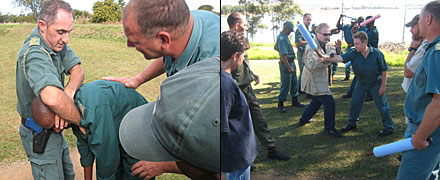
Conclusion
South Africa was a great experience, I met many wonderful people and made new friends.I felt that the instruction lit a spark and fulfilled expectations of what reality defense is and can be.
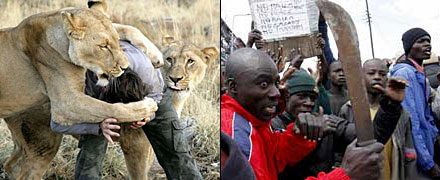
South Africa also seems surreal, especially for us from the West. Both the cities and the bush can be dangerous if you wander off unprepared. I can easily imagine someone going on a safari and casually taking an evening stroll outside their compound at night and become a delicious meal for the local lion. Conversely, taking a stroll in one of the cities at night, outside the safety of the hotel, could lead to new but unwanted acquaintances with a possible side-visit to the emergency room.
In the West, most of us are not prepared to deal with these types of situations. Therefore, it's important to make the appropriate adjustments in our minds as well as logistical preparations before we travel there. Taking these extra precautions will keep you safe and well.
